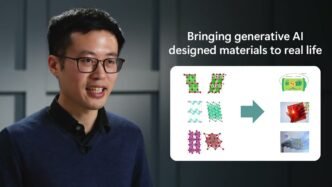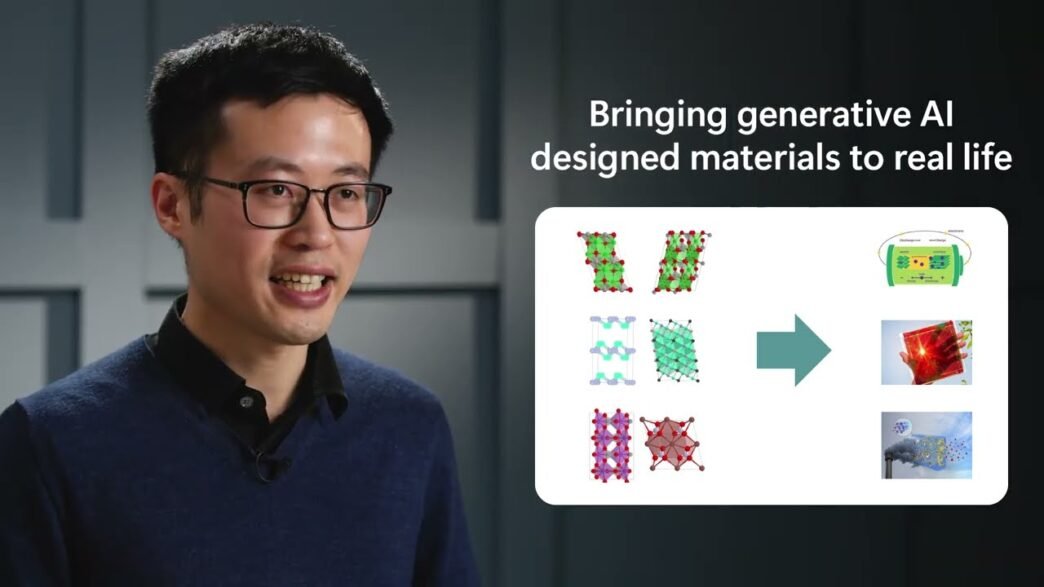The world of materials science is on the cusp of a revolution, thanks to the power of artificial intelligence. Microsoft has recently unveiled groundbreaking work in AI-driven material design, opening up exciting possibilities for creating new materials with tailored properties for a vast range of applications. This isn’t just incremental improvement; it’s a paradigm shift in how we discover and develop new substances.
The Traditional Approach: Trial and Error
For centuries, discovering new materials has been a slow, laborious process, often relying on trial and error in the laboratory. Scientists would synthesize different combinations of elements, test their properties, and iterate based on the results. This method is resource-intensive, time-consuming, and often limited by human intuition.
AI’s Disruptive Role: Prediction and Design
Microsoft’s innovative approach uses AI, specifically machine learning models, to accelerate material discovery and design. Instead of relying solely on physical experimentation, these models are trained on vast datasets of existing materials and their properties. This training allows the AI to:
- Predict Material Properties: Given a proposed chemical composition or structure, the AI can predict its properties, such as strength, conductivity, stability, and more. This drastically reduces the need for extensive lab work.
- Design New Materials: More impressively, the AI can work in reverse. Given a desired set of properties, the AI can suggest potential material compositions and structures that are likely to exhibit those characteristics. This is akin to having a “materials recipe book” powered by AI.
How it Works (Simplified):
Imagine teaching a child about different types of wood. You show them samples of oak, pine, and maple, telling them about their color, density, and strength. After seeing enough examples, the child can start to predict the properties of a new type of wood they’ve never seen before.
Microsoft’s AI works similarly, but on a much larger and more complex scale. It’s trained on vast databases of materials data, including:
- Chemical composition: The types and ratios of atoms present.
- Crystal structure: The arrangement of atoms in the material.
- Electronic structure: How electrons are arranged within the material.
- Physical properties: Measured characteristics like melting point, conductivity, and strength.
By analyzing these data, the AI learns the complex relationships between a material’s structure and its properties. This allows it to make accurate predictions and suggest new materials with desired characteristics.
Potential Applications:
The implications of this technology are enormous:
- Developing stronger, lighter materials for aerospace and automotive industries.
- Creating more efficient energy storage solutions, such as batteries and solar cells.
- Designing new catalysts for chemical reactions, leading to more sustainable manufacturing processes.
- Discovering new materials for medical implants and drug delivery systems.
- Creating advanced electronic components with improved performance.
The Future of Material Science:
Microsoft’s work is a significant step towards a future where AI plays a central role in material discovery and design. This approach has the potential to:
- Accelerate the pace of innovation: By rapidly screening vast numbers of potential materials, AI can significantly speed up the discovery process.
- Reduce research and development costs: By minimizing the need for physical experimentation, AI can save time and resources.
- Unlock new possibilities: AI can explore material combinations and structures that might not have been considered by human researchers, leading to the discovery of entirely new classes of materials.
This is an exciting time for materials science. With the help of AI, we are entering a new era of material design, one that promises to bring about transformative changes across various industries and improve our lives in countless ways.













